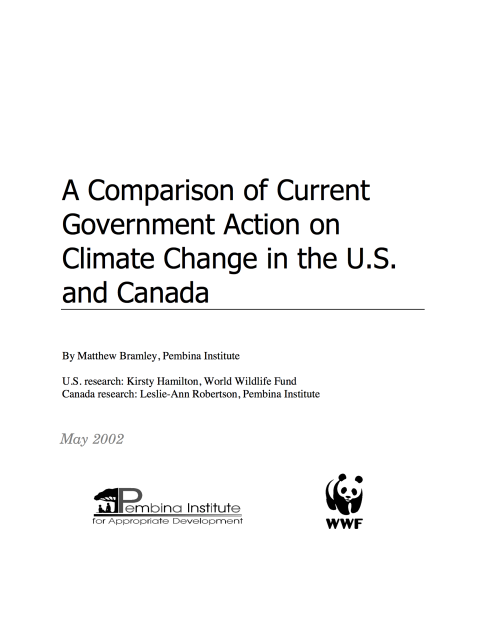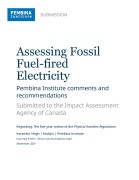This report examines measures implemented by governments in the U.S. and Canada to reduce greenhouse gas (GHG) emissions from all the major source categories, with the exception of agriculture. The report aims to capture as many as possible of the leading initiatives implemented in the U.S. at both federal and state levels, and to compare these to the initiatives implemented in Canada at both the federal level and in the five provinces that account for 89% of Canada's GHG emissions — Alberta, British Columbia, Ontario, Quebec and Saskatchewan.
Prominent in the rhetoric of opponents of the Kyoto Protocol in Canada is the notion that ratifying the Protocol would damage Canada's economic competitiveness. The Canadian economy is strongly linked to that of the U.S., so the argument goes, and if the U.S. is not acting then Canada cannot afford to either.
This report exposes a major flaw in this argument by presenting detailed evidence that governments in the U.S. have, in fact, taken far more significant action to reduce GHG emissions than have governments in Canada. Although the White House has abandoned responsibility to reduce GHG emissions, the federal government still administers a substantial body of programs that recognize the opportunity presented by the development of GHG reduction technologies. And U.S. state governments are far ahead of Canadian provincial governments in implementing GHG-reducing measures.
In short, Canadians make a serious mistake if they look only at the current position of the Bush Administration to justify a decision not to ratify the Kyoto Protocol.







